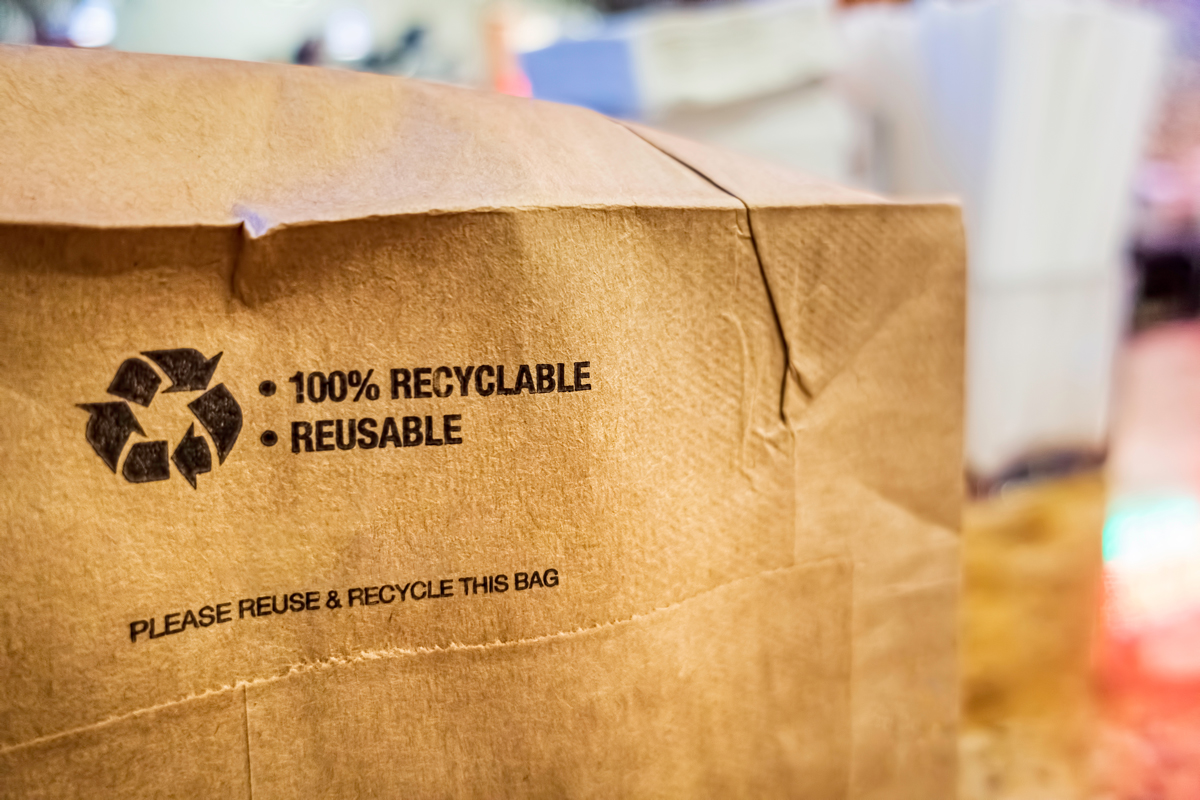As the world becomes increasingly conscious of the urgent need to address climate change and environmental sustainability, the marketing industry finds itself at a crossroads. In the year 2024, the demand for businesses to adopt eco-friendly practices has never been more pronounced, and savvy marketers are rising to the challenge by embracing a new era of green marketing.
Gone are the days when sustainability was merely a buzzword or a niche concern. Today, consumers are actively seeking out brands that align with their values and demonstrate a genuine commitment to environmental stewardship. This shift in consumer sentiment presents a unique opportunity for marketers to not only differentiate their offerings but also contribute to the greater good of the planet.
Rethinking the Marketing Landscape: Embracing Sustainability
In 2024, the marketing landscape is undergoing a profound transformation, with sustainability taking center stage. Businesses are recognizing that their environmental impact can no longer be overlooked, and savvy marketers are rising to the occasion by integrating eco-friendly practices into every aspect of their campaigns.
One of the most significant shifts is the widespread adoption of digital marketing strategies that minimize the carbon footprint of traditional advertising methods. From virtual events and webinars to paperless communications and targeted digital ads, marketers are leveraging technology to reduce waste and energy consumption while still effectively reaching their target audiences.
Additionally, marketers are increasingly collaborating with sustainable suppliers and partners, ensuring that every touchpoint in the marketing value chain aligns with their environmental commitments. This includes sourcing eco-friendly materials for promotional items, selecting renewable energy providers for office operations, and partnering with logistics companies that prioritize sustainable transportation solutions.
Harnessing the Power of Storytelling for Sustainability

In the era of green marketing, storytelling has become a powerful tool for capturing the hearts and minds of eco-conscious consumers. Marketers are recognizing that simply touting the environmental credentials of their products or services is no longer enough – they must craft narratives that inspire, educate, and engage their audiences.
One of the most effective strategies is to showcase the real-world impact of a brand’s sustainability initiatives. By highlighting the tangible results of their environmental efforts, such as reduced carbon emissions, increased recycling rates, or the preservation of natural habitats, marketers can demonstrate the meaningful change their businesses are driving.
Furthermore, marketers are leveraging the power of influencer marketing to amplify their sustainability stories. By partnering with eco-conscious influencers who have built a strong connection with their followers, brands can tap into a captive audience and inspire them to adopt more sustainable behaviors. These influential voices help to humanize the brand’s environmental commitments, making them more relatable and compelling.
Embracing the Circular Economy: Closed-Loop Marketing Strategies
In 2024, the circular economy has become a guiding principle for sustainable marketing, with businesses and marketers recognizing the importance of reducing waste, increasing recycling, and extending the lifespan of products and materials.
This shift is evident in the rise of product-as-a-service models, where marketers are promoting the benefits of leasing or renting products rather than outright ownership. This approach not only reduces the environmental impact of manufacturing and disposal but also fosters a deeper connection between the brand and the consumer, as they become active participants in the product’s lifecycle.
Additionally, marketers are embracing the concept of upcycling and repurposing in their promotional materials. By repurposing waste or discarded materials into unique and visually appealing marketing assets, such as branded packaging, displays, or even office furnishings, they are demonstrating the potential for a more circular approach to marketing.
This commitment to the circular economy extends beyond physical products and into the digital realm as well. Marketers are exploring ways to reduce the environmental impact of their digital marketing efforts, such as optimizing website performance to minimize energy consumption, utilizing cloud-based storage and computing solutions, and implementing sustainable data management practices.
Empowering Employees as Sustainability Champions

In the pursuit of eco-friendly marketing, the role of employees cannot be overstated. In 2024, marketers are recognizing that their greatest asset in driving sustainable change is their workforce – a team of passionate individuals who can amplify the brand’s environmental commitment and inspire action both within the organization and among its customers.
Savvy marketers are implementing comprehensive employee engagement programs that educate, empower, and incentivize their teams to embrace sustainable practices. This includes providing training on sustainable marketing strategies, fostering a culture of eco-innovation, and offering rewards and recognition for eco-friendly initiatives proposed and implemented by employees.
Moreover, marketers are leveraging their employees as brand ambassadors, encouraging them to share their personal sustainability journeys and insights with customers and the broader community. This peer-to-peer engagement helps to build trust, inspire action, and reinforce the authenticity of the brand’s environmental commitments.
Measuring and Communicating Sustainability Impact
In the era of green marketing, transparency and accountability have become essential. Savvy marketers understand that simply making sustainability claims is no longer enough – they must be able to quantify and communicate the tangible impact of their environmental initiatives.
To this end, marketers are investing in robust sustainability metrics and reporting frameworks that allow them to track and measure the progress of their eco-friendly efforts. From carbon footprint assessments and waste reduction targets to renewable energy usage and employee engagement rates, these data-driven insights are crucial for demonstrating the real-world impact of their sustainability initiatives.
Furthermore, marketers are leveraging these metrics to craft compelling sustainability narratives that resonate with their target audiences. By sharing these data-driven stories across various communication channels, they are able to build trust, foster brand loyalty, and inspire others to join them in the pursuit of a greener future.
Navigating the Regulatory Landscape of Sustainable Marketing
As the demand for eco-friendly marketing practices grows, so too do the regulatory frameworks and guidelines governing the industry. In 2024, marketers must navigate an increasingly complex landscape of environmental regulations, certifications, and best practices to ensure their sustainability claims are legitimate and impactful.
From adhering to stricter guidelines on environmental labeling and product claims to aligning with international sustainability standards and certifications, marketers must stay up-to-date on the evolving regulatory landscape. This requires a proactive approach to research, compliance, and collaboration with industry bodies and policymakers to ensure their green marketing efforts are above reproach.
By staying ahead of the curve and embracing a culture of transparency and accountability, marketers can position their brands as leaders in the sustainable marketing revolution, inspiring others to follow suit and contributing to the larger goal of environmental stewardship.
The Future of Green Marketing: Collaboration and Collective Impact
As the marketing industry continues to evolve towards a more sustainable future, the importance of collaboration and collective impact cannot be overstated. In 2024, marketers are recognizing that the path to a greener tomorrow requires a united effort, with businesses, consumers, and industry organizations all playing a crucial role.
Savvy marketers are actively engaging with their peers, industry associations, and sustainability experts to share best practices, learn from one another, and explore innovative solutions to the complex challenges of eco-friendly marketing. This collaborative approach not only fosters a sense of community but also accelerates the pace of progress, as businesses learn from each other’s successes and mitigate their collective environmental impact.
Furthermore, marketers are recognizing the power of consumer engagement and empowerment. By actively involving their customers in the sustainability journey, they are able to foster a deeper sense of brand loyalty, inspire eco-conscious behavior, and ultimately drive collective impact. This could involve initiatives such as crowdsourcing sustainability ideas, hosting community events focused on environmental stewardship, or providing educational resources to help consumers make more informed, sustainable choices.
As we look towards the future, the marketing industry’s commitment to sustainability is poised to have a transformative impact on businesses, consumers, and the planet as a whole. By embracing the principles of green marketing, marketers in 2024 are not only shaping the future of their industry but also contributing to a more sustainable, resilient, and equitable world.


